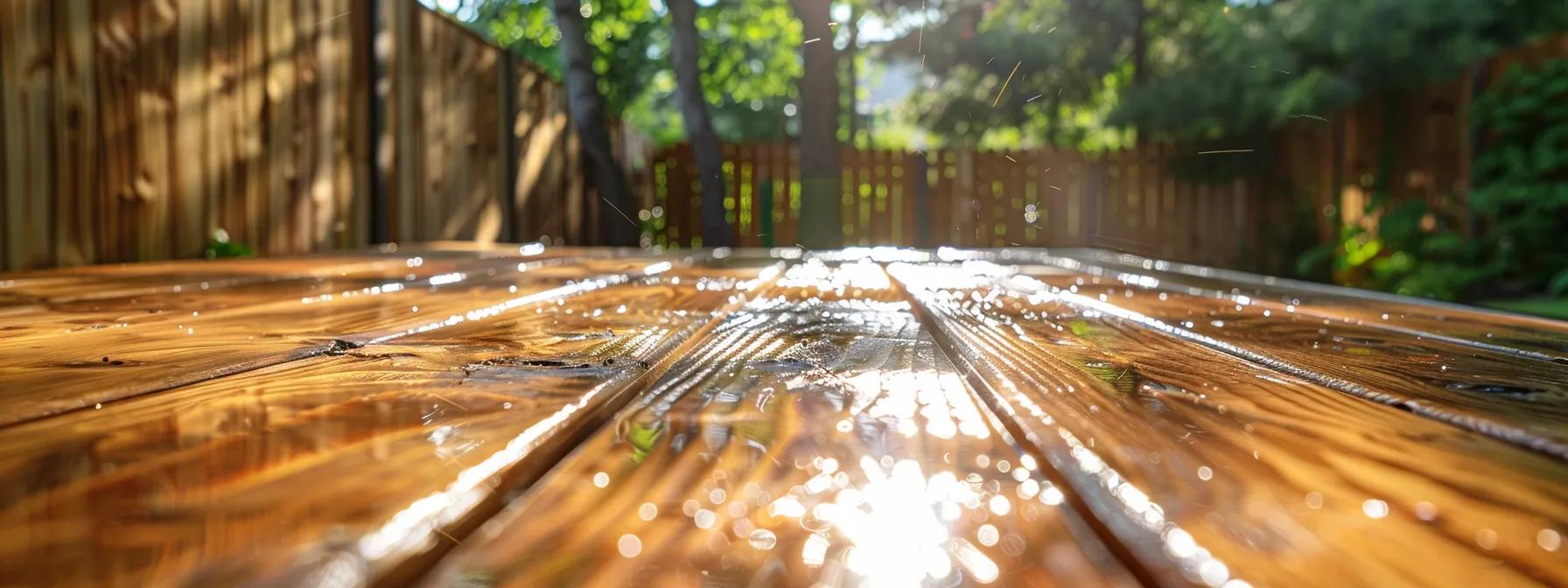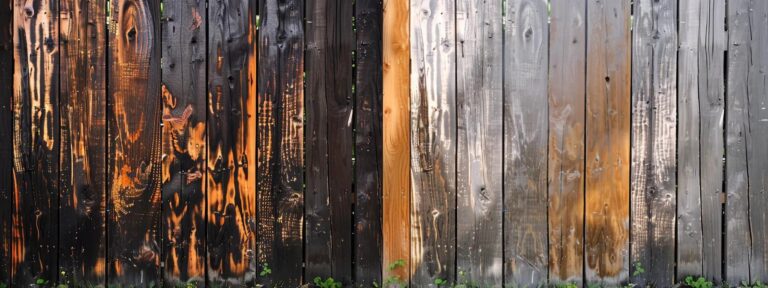deck stainingextend the deckstains suit areas
How to Protect and Stain Your Deck During July Heat for Lasting Results
The summer heat can be both a blessing and a curse for outdoor wood surfaces. Homeowners and businesses alike find that their decks, patios, and other wooden structures are exposed to harsh ultraviolet light, high temperatures, and elevated humidity. This weather, though ideal for outdoor gatherings, accelerates wear and tear on your deck. With nearly 30 years in wood restoration, TimberSeal Inc. understands the challenges of treating wood surfaces in extreme conditions. Proper
in July not only enhances your outdoor space but also protects the wood’s structural integrity. When left untreated, sun damage, moisture, and debris can quickly cause cracking, warping, and decay. Staining seals the wood fibers, safeguards against UV radiation, and prevents moisture penetration. By choosing the right stain and using correct application techniques, you can lower maintenance costs, extend your deck’s lifespan, and keep it safe and attractive for relaxation and entertaining. This article explains every aspect of deck staining in intense July heat—from benefits and challenges to selecting the best stain types, preparing your deck, applying the stain properly, and maintaining the finish. With actionable advice, detailed lists, and data-supported recommendations, readers will gain the confidence to protect their decks and ensure lasting results. As outdoor living grows in popularity, proper deck care is both an aesthetic and practical investment that saves time and money. The following sections break down each factor to consider when staining your deck in hot weather, ensuring it remains beautiful and durable for many seasons.
What Is Deck Staining and Why Is It Crucial in July Heat?
Deck staining is applying a protective finish to wood surfaces to improve durability and appearance, especially in summer. In July, when temperatures soar and UV exposure peaks, staining is crucial to prevent fading, cracking, and moisture damage. The stain penetrates the wood fibers, stabilizes the structure, reduces water absorption, and minimizes the effects of extreme temperature changes. Without this treatment, repeated exposure to intense heat can deteriorate your deck’s surface, leading to costly repairs or replacement. Therefore, scheduling deck staining with products designed for high heat is essential.
What Are the Benefits of Deck Staining in Hot Weather?
High-quality deck stains protect wood against aggressive UV rays that break down fibers, causing discoloration and weakening. A good stain also forms a moisture barrier, preventing water seepage during sudden rain or high humidity, which can cause swelling, cracking, or warping. Furthermore, stains enhance the wood’s natural grain and color while adding extra defense against mold, mildew, and debris buildup. Research shows that decks treated with modern UV-resistant wood stain experience significantly less weather-related deterioration than untreated surfaces. These coatings are easy to maintain and
’s lifespan despite harsh summer conditions.
How Does July Heat Affect Deck Materials and Finish?
July heat causes wood to expand when warm and contract when cool, leading to microscopic cracks that compromise the finish and allow moisture and UV damage. High temperatures also accelerate moisture evaporation, potentially causing the wood stain to dry too quickly, resulting in uneven coverage or bubbling. Additionally, the sun’s harsh rays can fade colors and break down chemical bonds in conventional stains, reducing their protective effectiveness. These issues underscore the importance of using stains formulated for high-heat conditions and following proper preparation and application procedures.
Why Timing Matters: When to Stain Your Deck in Summer?
Timing is critical when staining a deck during summer. Extreme heat can affect the adhesion and drying times of the stain. It is best to apply the stain on days with moderate temperatures—typically early morning or late afternoon—to allow a slower, more even drying process. Avoiding peak heat minimizes the risk of the stain drying too quickly, which can create streaks, bumpy surfaces, or an unsatisfactory finish. Experts advise checking the weather forecast and choosing days with mild temperatures and low wood to enhance stain durability and effectiveness.
Which Types of Deck Stains Work Best for Hot July Conditions?
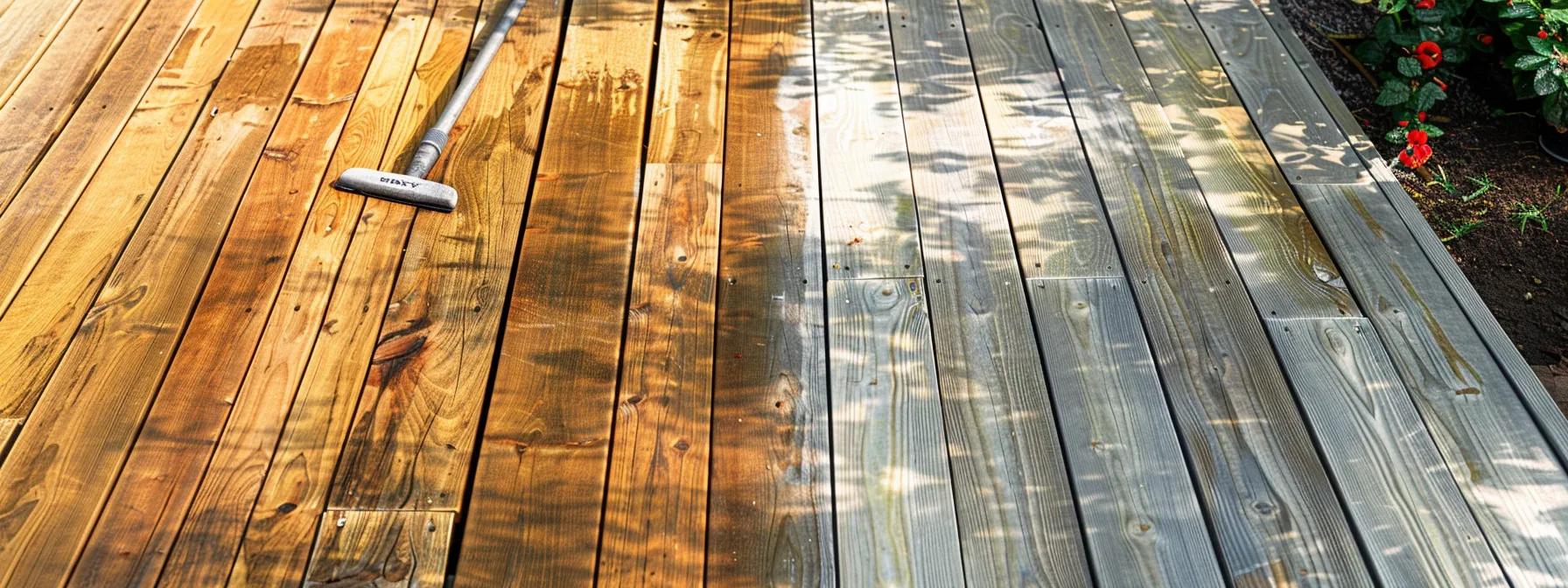
For hot July conditions, performance under high temperature and UV exposure is key. The choice between oil-based and water-based stains—and between solid and semi-transparent finishes—will affect how well your deck withstands the sun.
What Are the Differences Between Oil-Based and Water-Based Deck Stains?
Oil-based stains offer deeper penetration and a richer finish due to their solvent-based composition. They adhere well to weathered wood and create a durable barrier against moisture and UV damage, though they have longer drying times and stronger odors. Water-based stains dry faster, emit less odor, and are more environmentally friendly, providing a thinner, more even film on the wood grain . However, they may require more frequent applications since they do not penetrate as deeply. Homeowners should choose based on local climate and maintenance preferences, with oil-based stains often favored for their long-term durability in extreme heat.
How Do Solid and Semi-Transparent Stains Perform in High Temperatures?
Solid stains (opaque stains) provide nearly full coverage and a paint-like finish that hides the natural wood grain while offering superior UV protection by blocking direct sunlight. Semi-transparent stains allow natural grain to show and offer moderate UV protection and moisture resistance, though they might need more frequent reapplication under intense July heat. The choice depends on the visual effect and level of protection you desire. Solid stains are best in sunny climates where maximum UV protection is crucial, while semi-transparent
with less direct exposure.
Which Deck Stain Features Provide the Best UV and Heat Protection?
The best deck stains for UV and heat protection include high levels of UV inhibitors, durable resin formulations, and additives that enhance elasticity. UV inhibitors reflect harmful rays, while durable resins form a lasting film that resists cracking and peeling even with thermal expansion. Some advanced stains include heat-resistant polymers to maintain flexibility and adhesion despite rapid temperature changes. Such products significantly extend the coating’s lifespan and reduce maintenance frequency, making them a key investment in harsh summer climates.
How Should You Prepare Your Deck for Staining During July Heat?
Proper preparation is essential for a successful deck staining project in July heat. This involves thorough cleaning, sanding, and repairing to ensure the stain adheres evenly and penetrates deeply. The high temperatures can worsen issues like dirt and mold buildup, so meticulous cleaning is critical. Also, minor repairs such as filling cracks, replacing damaged boards, and sanding rough spots enhance wood stain absorption and provide a smoother finish.
What Are the Best Deck Cleaning Methods to Remove Dirt and Mildew?
Effective cleaning methods include using a pressure washer set to moderate pressure, biodegradable deck cleaners, and a stiff-bristled brush to remove dirt, mildew, and oil residues. For persistent mildew, a bleach and water solution works as a natural disinfectant without harming the wood. An electric power washer can assist in deep cleaning but should be used carefully to avoid damaging the surface. Rinse thoroughly with clean water and allow the deck to dry completely—ideally for at least 48 hours—before sanding and staining.
How to Sand and Repair Your Deck for Optimal Stain Absorption?
Sanding smooths the surface, removes old finish residues, and creates the ideal profile for stain absorption. Begin with coarse-grit sandpaper to remove splinters or peeling areas, then switch to fine-grit for a smooth finish. Repairs may involve filling gaps or cracks with wood filler and securing loose boards. This process not only improves appearance but also ensures a more even and durable stain application.
What Safety Precautions Should You Take When Working in July Heat?
When working in July heat, take extra precautions to prevent heat-related illnesses and chemical exposure. Work during cooler parts of the day—early mornings or late afternoons—and wear protective clothing, including a wide-brimmed hat and sunscreen. Stay hydrated by keeping water nearby and taking regular breaks in the shade. Additionally, wear a dust mask and safety goggles when sanding to protect against wood grain dust and debris. Always follow manufacturer guidelines when handling cleaning agents and stains, ensuring proper ventilation throughout the process.
What Is the Step-by-Step Process for Staining a Deck in Hot Weather?
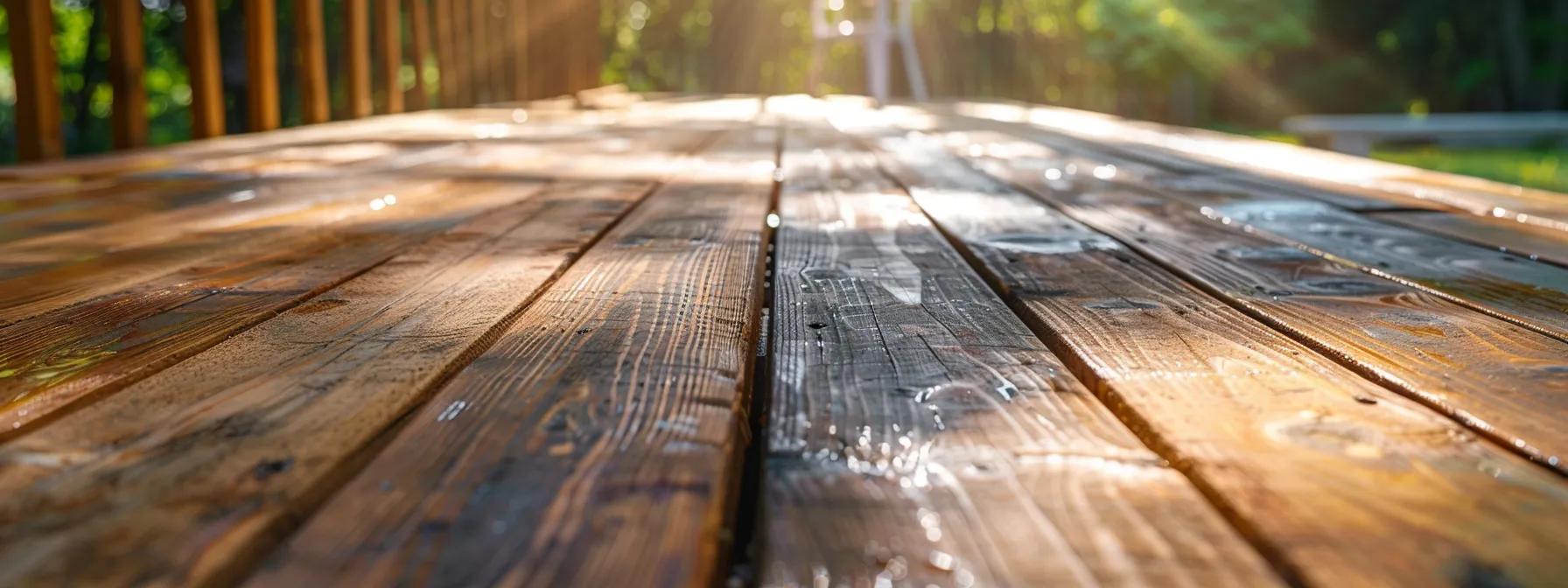
Staining a deck in hot weather involves a systematic process that starts with thorough preparation and ends with proper maintenance. This careful approach ensures the wood stain cures properly, providing a long-lasting, protective layer on your deck. Every step is important for achieving a professional finish that withstands the environmental stresses of intense July heat.
How to Apply Deck Stain Correctly in High Temperatures?
Begin by ensuring the deck is completely dry and properly prepped. Apply the stain along the wood grain using a high-quality brush or roller suited to the specific wood stain type. For large decks, a paint pad or electric sprayer can speed up the process, but be careful not to overapply, as this may cause drips and uneven drying. Work in small sections to keep a wet edge and avoid lap marks. Follow product specifications for drying time, which may be longer in intense heat, and avoid working during the hottest part of the day.
Which Tools Are Best for Deck Staining in Summer Heat?
The right tools make a significant difference. A high-quality synthetic bristle brush is ideal for corners and detailed areas, while a foam roller or wood stain pad works best for large, flat surfaces. An air-assisted sprayer can provide quicker application but requires careful handling to avoid overspray, especially in fast-drying conditions. Additionally, a sanding block or orbital sander helps ensure the deck is evenly prepped before staining.
How Long Should You Let the Stain Dry Before Using the Deck?
Allow sufficient drying time before using the deck to avoid smudging or premature wear. Typically, deck stains require 24 to 48 hours to dry, though in extreme heat, extending this period may be necessary. Even if the surface feels dry within a few hours, the stain continues to cure at a molecular level. A full 48-hour curing period is recommended for optimal adhesion and hardness.
How Can You Maintain and Protect Your Deck After Staining in July Heat?
Ongoing maintenance is crucial to preserve the protective layer of the deck wood stain . Regular cleaning, periodic inspections, and timely reapplication of sealers or stains will keep your deck in excellent condition. In hot climates, continuous exposure to dirt, debris, and UV rays can gradually break down the stain, so maintaining a routine care schedule is vital for prolonging the life and appearance of your deck.
What Is the Recommended Deck Cleaning and Inspection Schedule?
For best results, clean and inspect your deck at least once per season. A basic routine might include weekly sweeping to remove debris, a gentle wash every few months, and a monthly visual inspection to check for signs of mildew, cracking, or discoloration. In high-traffic areas or after severe weather, more frequent checks are advisable to promptly address any minor issues.
When and How Often Should You Re-Stain Your Deck in Hot Climates?
Re-staining frequency depends on the deck’s sun exposure and weather conditions. Generally, decks should be re-stained every two to three years. However, in extremely hot and sunny areas, annual touch-ups may be necessary if you notice faded color, worn edges, or signs of drying. Regular annual evaluations help determine whether a full re-stain or a light refresh is needed. Using an exterior wood stain or topcoat along with the stain can extend the period between reapplications.
How Does Applying a Deck Sealer Enhance Heat and UV Protection?
Applying a deck sealer over the wood stain adds an extra layer of protection. Sealers lock in the stain, protect against further UV damage, and repel moisture. This additional barrier minimizes sun-induced fading and cracking, extends the finish’s lifespan, and simplifies cleaning by repelling dirt and debris. Choose a high-quality, weather-resistant sealer that works well with your stain for optimal protection.
What Are the Pros and Cons of DIY vs. Professional Deck Staining in July Heat?
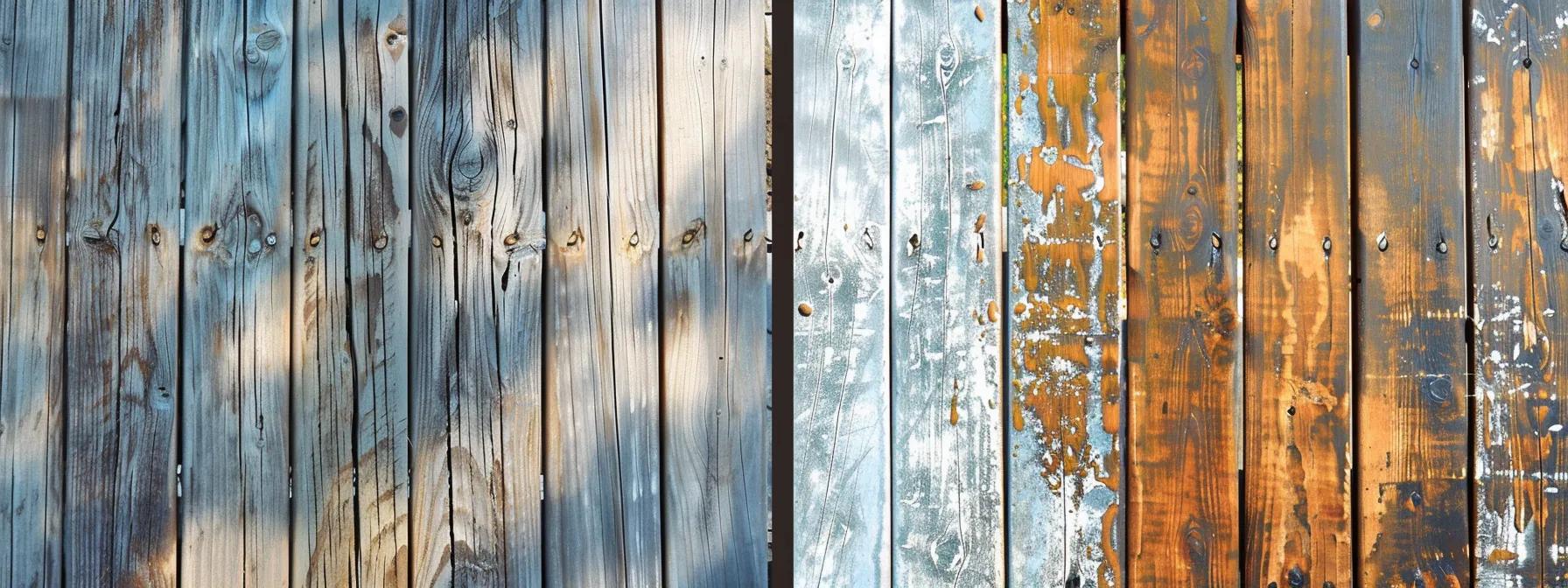
Deck staining in extreme July heat can be done as a DIY project or by hiring professionals. DIY allows for complete control over the process but may be challenging under high heat without the proper tools and experience. Mistakes can reduce the wood stain ’s protective quality. Professional services bring expertise, specialized equipment, and often offer warranties, ensuring consistent, high-quality results even under harsh conditions.
What Are the Benefits of Hiring Professionals for Summer Deck Staining?
Hiring professionals ensures the project is completed efficiently and at a high standard. Experienced crews adjust techniques for faster drying times in extreme heat and use premium products formulated for such conditions. Their specialized tools and expertise result in a smoother, more durable finish, while warranties on labor and materials offer peace of mind and may save money in the long run.
What Challenges Might You Face When Staining Your Deck Yourself in July?
DIY deck staining in the height of summer presents challenges such as rapid stain drying that can cause an uneven finish, bubbling, or peeling. Without proper tools and experience, thorough cleaning, sanding, and repairs may be difficult, and working under intense sun can be physically exhausting. Handling chemicals and heavy equipment without professional training increases the risk of accidents and may lead to higher maintenance or premature re-staining.
How to Choose the Right Deck Staining Service for Hot Weather Conditions?
When selecting a deck staining service for hot weather, look for companies with strong reputations and positive customer reviews. Evaluate their expertise in high-temperature applications, certifications, years of experience, and portfolio examples. Ask about the products they use; reputable services employ stains and sealers designed for extreme heat and UV resistance. Request multiple quotes to compare pricing, services, and warranty terms, and choose a provider who offers personalized advice and schedules projects at optimal times.
What Are Common Questions About Deck Staining and July Heat?
Deck staining in hot weather raises several common questions. The following FAQs provide practical advice and address issues related to timing, stain types, preparation methods, and cost—ensuring your wood remains protected and attractive even under extreme conditions.
How Often Should I Stain My Deck in Hot Weather?
It is generally recommended to stain your deck every two to three years. In regions with intense sun and high temperatures, annual touch-ups may be necessary if you notice significant fading or chalking. Regular inspections—at least once a year—help determine if a complete re- wood stain is needed, preserving both the deck’s appearance and structural integrity.
What Is the Best Deck Stain for Hot and Sunny Conditions?
For hot and sunny conditions, high-quality wood stain -based solid stains are highly recommended due to their superior UV protection and durability. These stains, fortified with advanced UV inhibitors and resilient resins, resist rapid drying and thermal expansion. Although they take longer to dry and have stronger odors, their long-term performance makes them a preferred choice.
How Do I Prepare My Deck Properly for Staining in July?
Proper preparation requires a multi-step approach: thoroughly clean the deck to remove dirt, mildew, and old finish; let it dry completely (at least 48 hours); sand to smooth the surface; and repair any damaged areas with quality wood filler. These steps are critical for ensuring even stain absorption and a durable finish.
How Much Does Professional Deck Staining Cost During Summer?
Professional deck staining costs can range from approximately $1.50 to $3.50 per square foot, depending on the deck size, complexity of the job, and local labor rates. Although DIY may seem cheaper initially, the superior quality, expert application, and long-term durability provided by professionals can justify the investment through reduced future maintenance.
Final Thoughts
Staining your deck during the intense July heat is challenging, but with proper preparation, the right stain selection, and regular maintenance, your deck can remain durable and visually appealing for years. Investing in high-quality products and following a structured process—from thorough cleaning and timely repairs to careful application and routine upkeep—ensures lasting beauty and protection for your wood surfaces. While DIY options may appear cost-effective, professional services often deliver superior, long-lasting results under harsh summer conditions. Ultimately, protecting your deck is an investment in safety, appearance, and property value.
Frequently Asked Questions
Q: What are the benefits of staining a deck during hot weather? A: Staining a deck protects the wood from UV damage and moisture penetration. It enhances the natural grain and color while forming a durable barrier against cracking, warping, and mildew growth. Regular maintenance through staining simplifies cleaning and prolongs the deck’s lifespan.
Q: Can I apply deck stain in direct afternoon sunlight? A: No. Applying deck stain in direct afternoon sunlight can cause rapid drying, leading to an uneven finish, bubbling, or streaking. It is better to work in the early morning or late afternoon when temperatures are cooler.
Q: How do I choose between oil-based and water-based deck stains for high heat? A: Oil-based stains provide deeper penetration and longer-lasting protection in high heat due to their solvent-based formulas, making them ideal for older or weathered wood. Water-based stains dry faster, are more eco-friendly, and emit less odor. The choice depends on your deck’s condition, environmental preferences, and tolerable drying time.
Q: Is it necessary to use a deck sealer after staining, and how does it help? A: Yes. Using a deck sealer locks in the wood stain, adds extra protection against UV damage and moisture, and simplifies subsequent cleaning. This extra layer extends the life of the finish and reduces maintenance frequency.
Q: What safety precautions should I take when working with deck stains during the summer? A: When working in high temperatures, wear protective clothing such as a hat, lightweight long-sleeved shirts, and gloves. Use sunscreen, stay hydrated, and take breaks in shaded areas. Also, wear a dust mask and safety goggles when sanding, and always follow manufacturer guidelines for chemicals and cleaning agents.

